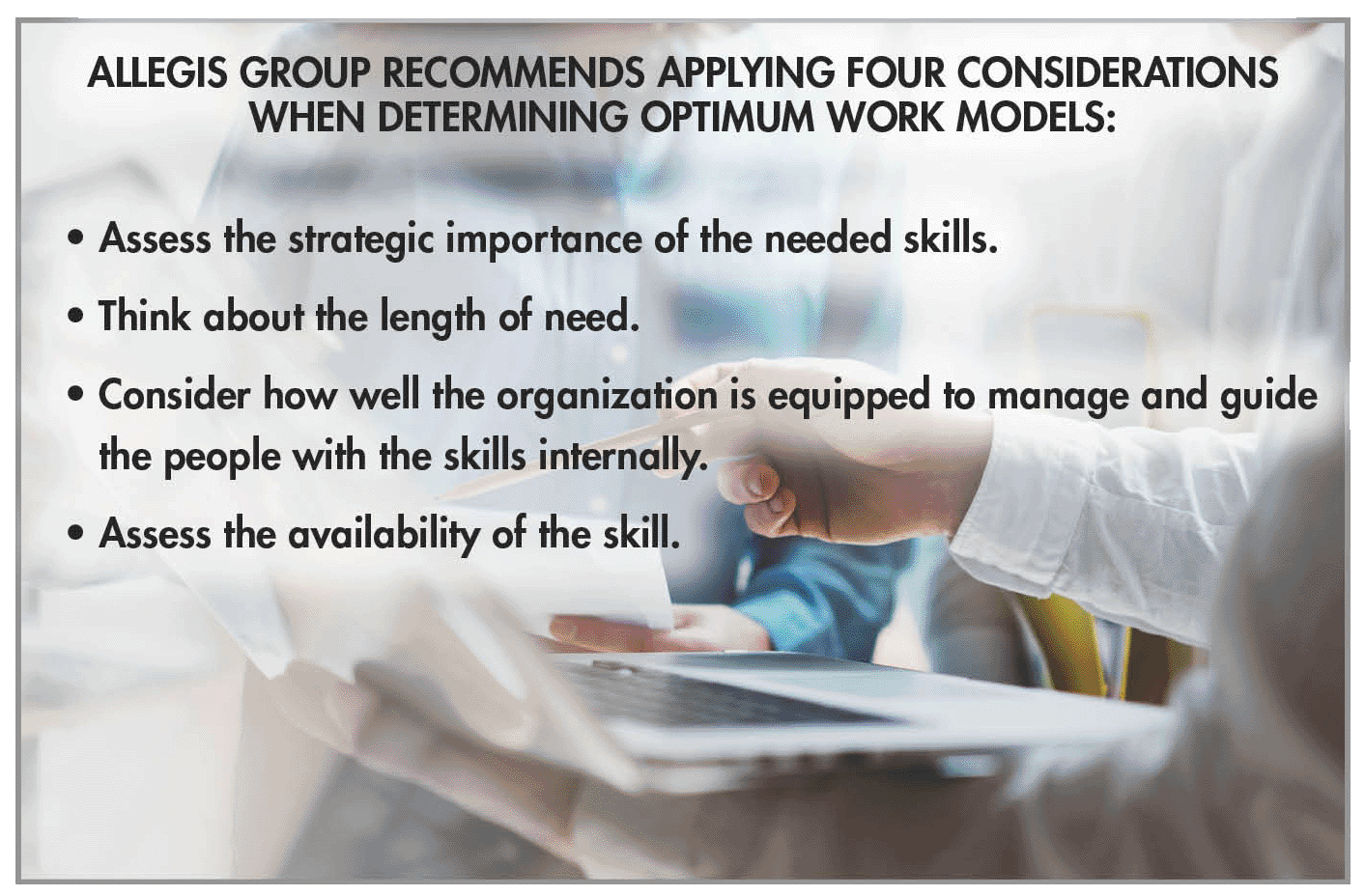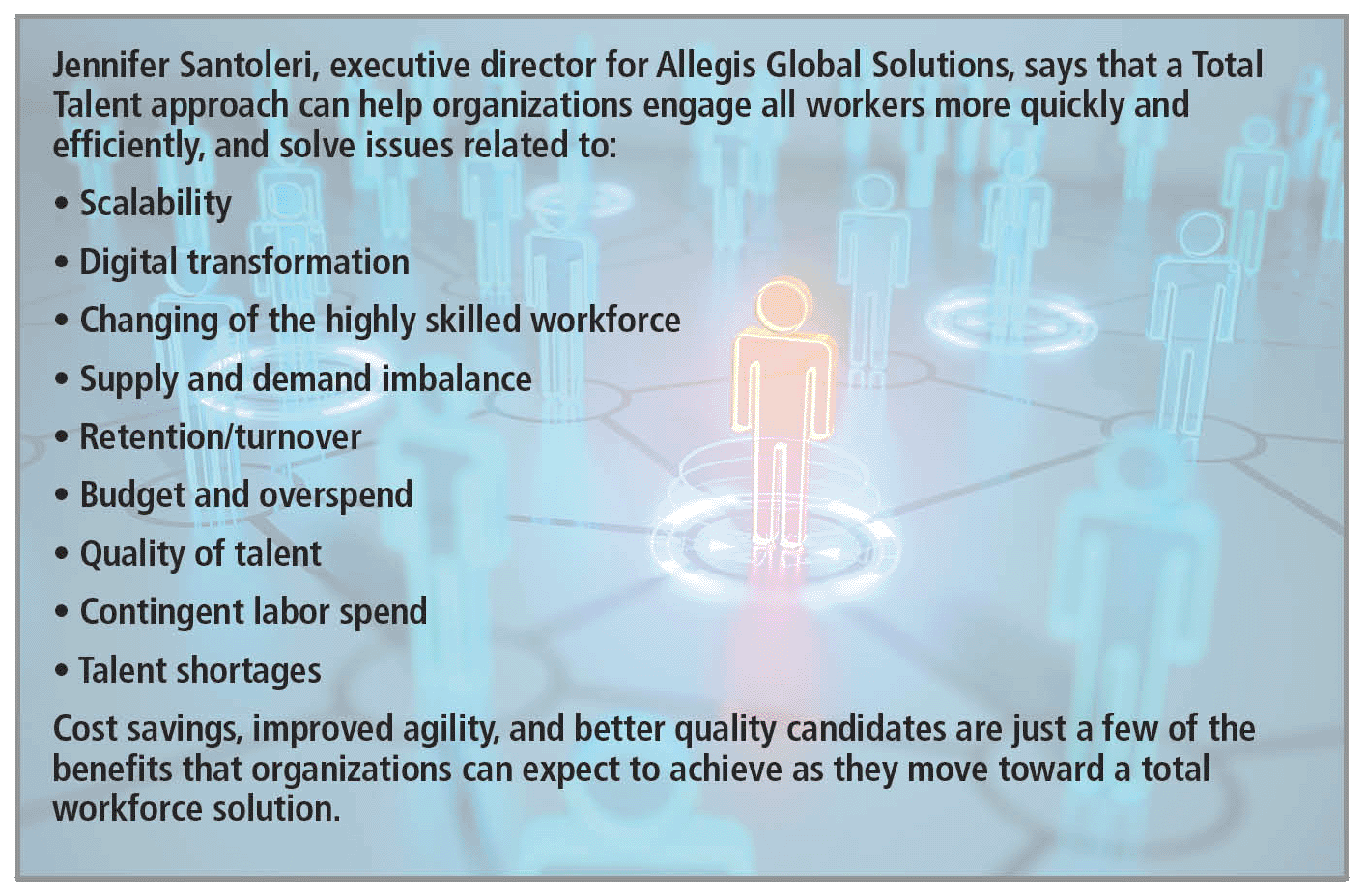A Total Talent approach allows organizations achieve the best quality of hire.
By Tierney McAfee
With skilled talent increasingly choosing alternative work arrangements over permanent, full-time positions, some organizations are responding in kind by shifting away from traditional recruitment models and toward more unified strategies.
“Total talent acquisition offers a straightforward, holistic, and proactive approach,” explains Jennifer Santoleri, executive director for Allegis Global Solutions. “The client’s goals are aligned to a total talent acquisition strategy to address both full-time and contingent labor options through a comprehensive and consistent model.”
By leveraging data insights, direct sourcing, innovative technology, employer branding, and candidate experience, a total talent approach allows employers to focus on the value a worker can bring to an organization as opposed to their employment status. This ensures that the best candidate for the role is hire. Data analytics and business intelligence are key in making a tangible impact on this process.
“Regardless of employee classification, a company can determine the type of resource most appropriate for their need, ensuring they are filling the position with the best type of resources needed at that time,” Santoleri explains. “Utilizing multiple vendors for different types of hires reduces accuracy, increases spend, and lowers quality. The MSP/RPO model offers continuity across the entire hiring ecosystem.”
Santoleri says that the MSP/RPO direct sourcing model can also help organizations save money by focusing on workforce utilization through strategic planning across the organization -regardless of position type.
A 2018 report by Allegis Group highlights the importance of replacing traditional, rigid recruitment approaches with more flexible work models in today’s rapidly changing landscape of low unemployment, talent scarcity, global sourcing, digital talent acquisition, and a rising multigenerational workforce.
According to the report, which uses survey data collected from more than 1,000 HR decision-makers, companies have been slow to adopt flexible models for total talent, with 44 percent of organizations trailing when it comes to utilizing all worker types.
Santoleri emphasizes that adopting a customized workforce solution allows organizations to meet permanent needs while also remaining agile in a volatile and evolving environment. In fact, Ardent Partners‘ The State of Contingent Workforce Management 2017-2018 report found that the desire of 71 percent of today’s businesses to be more agile now represents the top challenge in managing non-employee labor.
“Total talent removes silos, giving full visibility into the entire workforce, and links strategy and vision regardless of the type of employee,” Santoleri says.”With the removal of silos, an organization is able to more easily flex up and down and fill in the gaps and determine actual full-time versus contract needs, as well as position type.”
Santoleri recommends that organizations seeking to move toward a total talent solution take the following steps:
- Determine the goals and needs of talent acquisition strategy.
- Review the benefits of a total talent approach and how they could positively impact talent acquisition.
- Outline a blueprint for implementation that considers change management, access to data, and the type of technology needed.
- Develop a project plan, timeline, and communication methods to leaders.
















